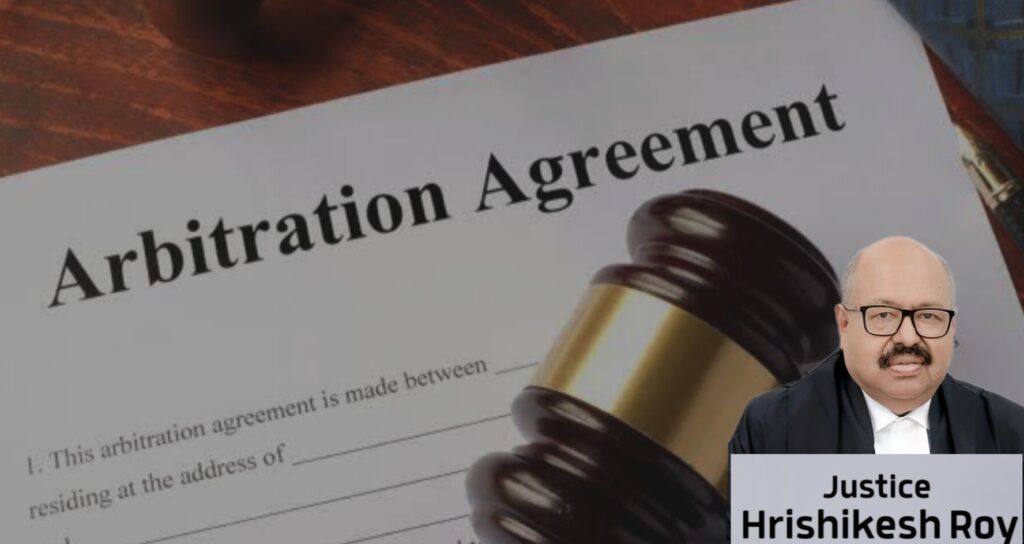Anushri Joshi
Arbitration in India, once heralded as a faster, more efficient alternative to the judicial system, has devolved into a process burdened with delays, adjournments, and inefficiencies. Justice Hrishikesh Roy, a sitting judge of the Supreme Court of India, vividly captured the present state of affairs when he remarked that “arbitration is no longer the sleek sports car that we once envisaged, and instead it has become more like an overloaded truck struggling up the hill while we watch from behind wondering, ‘wasn’t it supposed to be faster?” These remarks, delivered during the India Alternative Dispute Resolution (ADR) Week, reflect the growing concern over the diminishing effectiveness of arbitration in India, which was once viewed as the panacea for the overburdened courts. Justice Roy’s analogy poignantly illustrates the fundamental issue facing arbitration in India, its transformation into a slow-moving, formalistic process, much like the litigation system it was designed to circumvent. The source of this inefficiency lies in the structural and procedural issues that have crept into the arbitration framework, turning it into a convoluted mechanism rife with delays. As noted, “We are slowly turning arbitration into what it was never meant to be. Just another formal process with more adjournments, more delays, more paperwork, and less arbitration actually getting done.” The very essence of arbitration, speed, flexibility, and efficiency, has been eroded by the constant adjournments, excessive paperwork, and an increasingly formalistic approach to hearings.
One of the key reasons for this deterioration, according to Justice, is the over-involvement of part-time arbitrators and lawyers who prioritize court appearances over arbitration proceedings. “Such a state of affairs is prevailing because arbitration in India is burdened with too many practicing lawyers who attend court full time and then take part in arbitration during their free time,” he observed. The dual role played by these legal professionals results in frequent adjournments, leading to arbitration matters dragging on for years. This duality of roles reflects the broader malaise in India’s arbitration culture, where the practice of arbitration has been relegated to a secondary pursuit rather than being treated as a specialized and full-time professional activity.
The legislative framework governing arbitration in India, primarily the Arbitration and Conciliation Act, 1996, has seen several amendments aimed at addressing these procedural inefficiencies. However, despite the amendments, key provisions such as Section 29A mandating the completion of arbitration proceedings within 12 months have not succeeded in curbing the endemic delays. Part-time arbitrators, burdened with their primary courtroom obligations, struggle to meet these deadlines, resulting in frequent extensions and delays. Justice Roy’s remarks underscore this reality, as he pointed out that arbitration is often treated as a secondary vocation rather than a dedicated profession. “Attending in court is important, as it provides a degree of recognition amongst your peers and colleagues. But at the same time, unless we have committed bar members attending to arbitration more or less in an exclusive fashion, the professionalism needed in the field of arbitration is unlikely to develop into a dynamic entity we all hope for,” he noted.
Adding to these concerns is the increasing reliance on retired judges to act as arbitrators. While their legal acumen is valuable, their propensity to run arbitration proceedings with the same procedural rigidity and formality as courtrooms has diluted the informal and flexible nature of arbitration. As a result, arbitration proceedings have started to resemble traditional litigation, with procedural delays, formal submissions, and prolonged hearings. This defeats the very purpose of arbitration, which was designed to offer an expeditious resolution mechanism. Justice Roy’s humorous analogy to a conversation between Sachin Tendulkar and Roger Federer, where Indians use tennis rackets to kill mosquitoes instead of playing tennis, succinctly captures this issue: “I hope we don’t do the same thing with arbitration and make it something else.”
Indeed, the tendency to transform arbitration into a quasi-litigation process has been exacerbated by judicial interventions. While the Supreme Court, in Bharat Aluminium Co. vs. Kaiser Aluminium Technical Services Inc.,2012[1] (BALCO decision), sought to limit judicial interference in arbitral proceedings, the reality on the ground is different. State of Jharkhand vs. HSS Integrated SDN,2019[2], show that arbitration matters continue to be dragged into court for protracted litigation, often nullifying the purpose of opting for arbitration in the first place. The 2015 amendments aimed at reducing judicial intervention, expediting arbitration proceedings, they have not fully achieved their objectives. Vedanta Ltd. vs. Shenzhen Shandong Nuclear Construction Co. Ltd., 2019[3], highlights how even post-amendment, arbitral proceedings in India are mired in delays, largely due to procedural backlogs and the overburdened nature of the courts.
The heavy reliance on judicial intervention and procedural formalities results in arbitration being treated not as a dynamic dispute resolution mechanism but as a process subservient to the litigation system. This has a chilling effect on India’s ability to become an international arbitration hub, as envisioned by policymakers. The promise of swift and efficient resolution under arbitration is undermined by the structure meant to support it. Bhatia International vs. Bulk Trading S.A., 2002[4], the Supreme Court permitted judicial interference in international arbitrations seated in India. Although the ruling was later overturned by BALCO (2012), the damage had already been done, with India’s arbitration regime earning a reputation for unpredictability and excessive judicial intervention.
If arbitration is to regain its intended form as an efficient, ADR mechanism, it is imperative that the legal fraternity, as Justice Roy suggested, treat it as a full-time, specialized profession. Without this shift in mind-set, arbitration in India will continue to languish under the weight of part-time arbitrators, frequent adjournments, and a quasi-litigation approach. In its current state, arbitration in India will remain, as Justice Roy aptly put it, an “overloaded truck struggling up the hill,” weighed down by procedural inefficiencies and a lack of dedicated practitioners.
[1] 9 SCC 552
[2] SCC OnLine SC 1635
[3] 11 SCC 465
[4] 4 SCC 105

